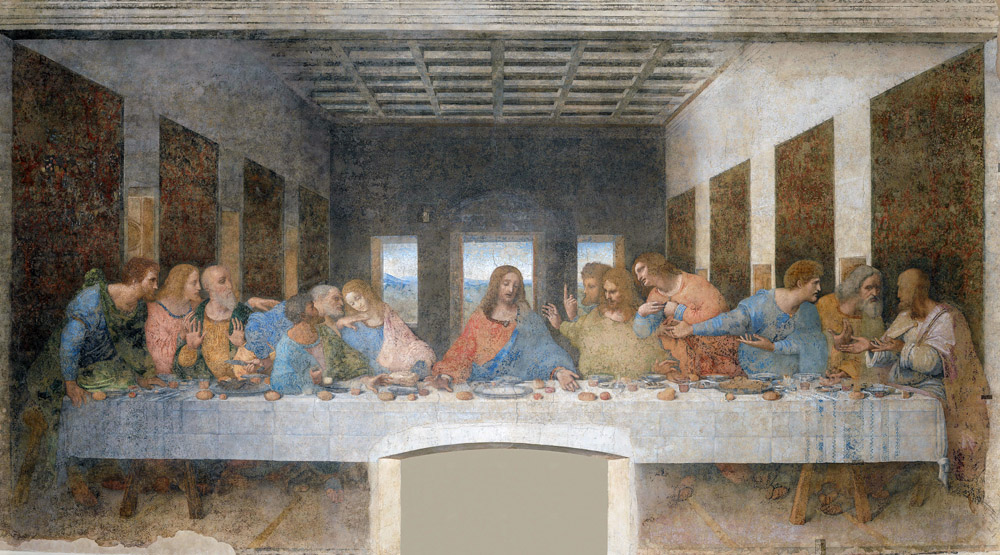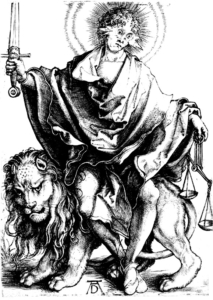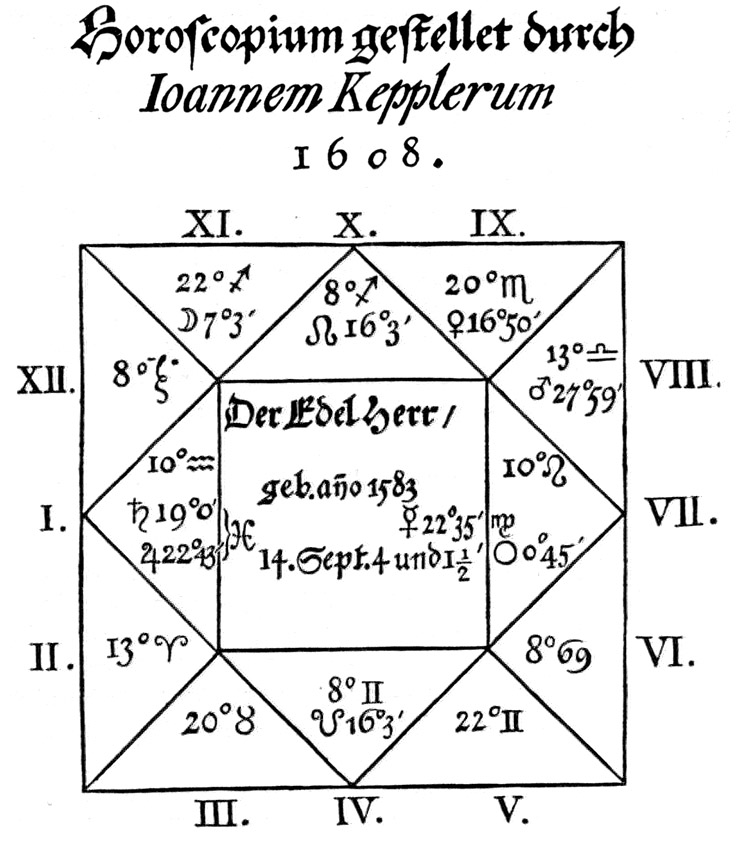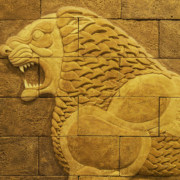Astrology in early Modern History
In the wake of Islamic expansion, Arabian astrology spread from the 8th century via Spain to the borders of the Frankish Empire. From the 11th to the 13th century, numerous Arabic and Jewish works were translated into Latin. Oriental magic, Kabbalah and astrology thus entered the occidental cultural sphere and soon took on an independent development there. For a long time, the Church banned the divination of the stars as “empty fraud”. It was not until Christian theologians such as Thomas Aquinas (1225 – 1274) developed the ideological foundations that astrology could be reconciled with Christianity. European rulers began to employ court astrologers. One of the first great astrologers of the Occident was the Italian mathematician Guido Bonatti (1223 – 1300). As court astrologer to Frederick II of Hohenstaufen and Count Montefeltro, he achieved fame with his predictions. Astrologers still refer to his works today. In the second half of the 13th century, Johannes Campanus, mathematician to Pope Urban IV, developed a new house system which, for the first time, was not based on the ecliptic but on the celestial space of the place of birth.
The Zenith of Astrology in the Renaissance
Astrology reached its zenith during the Renaissance. Europe was fulfilled by the reborn spirit of antiquity. Universities were founded in all major cities to institutionalise the new wealth of knowledge. And Astrology was considered the royal science. Even art was highly influenced by astrological allegories.
Thus the twelve disciples in the famous painting “The Last Supper” by Leonardo Da Vinci (1452 – 1519) were modelled on the twelve signs of the zodiac in their facial expressions, gestures and physiognomy. The row begins on the right with Simon the Zealot as a direct, combative Aries and ends on the left with Bartholomew as an impassively observing Pisces. The disciples are arranged in four groups of three, which correspond to the four astrological quadrants. Each disciple assumes the posture typical of his sign of the zodiac: Simon, Aries, resolute and impulsive; Thaddaeus, Taurus, neck-hugging and holding on to himself; Matthew, Gemini, youthfully smooth and wildly gesticulating; Philip, Cancer, fervently wallowing in emotion; the elder James, Leo, in expressive, radiant posture; Doubting Thomas, Virgo, warningly raising his index finger.
To the left of Jesus follow the autumn signs: John, Libra, weighing indecisively, Judas, Scorpio, stealthily receding, holding the purse tightly to himself, Peter, the religiously combative Sagittarius, hurriedly and disregarding the order, whispering in John’s ear. Finally, the three winter signs follow, the fourth quadrant. While all the other apostles are busy with themselves and their thoughts and feelings, the winter signs observe the events from a distance: the old, bald Andrew, Capricorn, anxiously raising his hands defensively, the younger James, Aquarius, fraternally embracing his friends, and finally the silently contemplating Pisces Bartholomew, the only disciple whose feet (traditionally assigned to Pisces) can be seen. As it was usual for his time, Da Vinci also incorporated astrological ideas into this famous work. He was probably advised in this by his close friend, the Swiss astrologer Konrad Fürst.
There are also numerous astrological allegories in the paintings of Albrecht Dürer (1471 – 1528). His copperplate engraving “Melencholia I” (1514), for example, is an artistic collection of the analogical chains of the planet Saturn. The astrological symbolism is probably most obvious in the copperplate engraving “Sol Iustitiae” (c. 1500). The personified sun is sitting on a lion. In her raised hand she holds a sword, in her lowered hand a pair of scales. This symbolises the astrological dignities of the sun. According to traditional teachings, the Sun rules Leo, is exalted in Aries (symbol sword) and in Libra in the fall. There are countless allegories of this kind in paintings and pictures from the Renaissance period. Numerous other examples can be found in the book “Astrologie in der Kunst” by Klemens Ludwig.
Doomsday Prophecies
Even though the reputation of astrology was at its peak during the Renaissance, there was already criticism at that time. One of the most influential opponents of astrology was the Italian humanist Pico della Mirandola (1463 – 1494). In his posthumously published work “Disputationes adversus astrologiam divinatricem” he turned sharply against astrology. He suggested that astrological theories should be subjected to statistical tests to prove their uselessness. Mirandola criticised above all deterministic astrology, which interpreted man’s destiny as an unalterable consequence of the stars. And indeed, the Renaissance brought not only a tremendous spiritual expansion, but at the same time a last great upsurge of superstition. Numerous prophecies of the end of the world were read from the stars to terrify the people. Especially planetary constellations in one sign gave rise to gloomy predictions.
Thus the emergence of syphilis was explained by the preceding great conjunction of the planets Jupiter and Saturn in the sign of Scorpio. The meeting of these two slowest planets was considered a royal constellation and extremely significant, especially for Mundane forecasts. Moreover, in the constellation of October 1484, all other celestial bodies except of Mars were in Scorpio, the sign of the sexual organs. A sexual epidemic seemed to be the logical consequence of this constellation for the astrologers of the Renaissance. The well-known astrologer Johannes Lichtenberger (1426 – 1503), on the other hand, predicted from the conjunction the coming of a prophet who would revolutionize the church. When Martin Luther led the Protestant Reformation a few decades later, this was seen as proof of the accuracy of Lichtenberger’s prophecies. After all, Luther had been born in the sign of Scorpio in 1483, just one year before the constellation.

Astrological Pamphlet of Leonhard Reymann (1523): The Conjunction of all Planets in the Sign of Pisces will bring the Great Deluge
Particularly spectacular was the prophecy of a great Flood for the year 1524, which the well-known astrologer Johannes Stöffler (1452 – 1531) had already predicted in 1499. His disciples, especially the first astrologer of Brandenburg, Johannes Carion (1499 – 1537), held on to this prophecy until the promised year and published numerous lurid writings on the subject. The Flood prophecies were based on a conjunction of all planets in the sign of Pisces in February 1524. Carion described the coming effects of this constellation in detail in his book “Prognostication und erklerung der großen wesserung” (1521). He predicted destructive storms and floods, which would lead to crop failures, famine and epidemics. He also prophesied discord and dissension between the spiritual and secular leaders, which would bring “great bloodshed of the Christian people” and “oppression of great heads” in 1525.
The best-known depiction of this prophecy of the Flood is the pamphlet “Practica vber die grossen und manigfeltigen Coniunction der Planeten, die im jar 1524 erscheinen vn vngezweiffelt vil wunderparlicher ding geperen werden” by Leonhard Reymann, published in 1523. The upper part of the cover shows a large fish with a dead man, the sun, the moon and the five planets in its body. The great flood pours out of its belly and washes everything away. In the lower part of the picture, the king, the pope and the clergy on the right and the peasants led by Saturn on the left are hostile to each other.
The closer 19th February 1524 came, the more people panicked. The rich bought ships to survive the Flood. The poor prayed to God for mercy. But the great deluge did not come. This, however, did not diminish the fame of the astrologers. Reymann simply published another paper in 1526 on the planetary clustering in Pisces. The Flood had disappeared from the cover. Instead, only the hostile peasants and feudal lords were depicted. Although the great deluge had failed to materialise, Reymann praised the accuracy of astrology. Looking back on the year 1524, he spoke of a constellation whose consequences could not be prevented by wisdom and concentrated on the depiction of the German Peasants’ War of 1525. Admittedly, this was already clearly in the air at the time of the forecasts. But in retrospect, it was possible to turn the diagnosis into a forecast and thus pass it off as a success for astrology.
Cardanus and Nostradamus
Such artifices were common in Renaissance astrology. Thus, Pico della Mirandola’s harsh criticism was not surprising. Nevertheless, astrology continued to enjoy great recognition for many decades. Outstanding scholars dealt with it, among them Paracelsus (1493 – 1541) or the Italian physician and mathematician Hieronymus Cardanus (1501 – 1576). Cardanus was a pioneer of probability theory and used this knowledge to finance his studies by gambling. Moreover, he was the first to calculate with negative and complex numbers and to develop a method for solving third and fourth degree equations. Cardanus was famous as the greatest physician of his time and healed numerous kings and princes. He was also considered an outstanding physiognomist and astrologer. Cardanus was very precise with his astrological predictions. For example, he predicted that King Edward VI of England would fall fatally ill at the age of 55 years, 3 months and 17 days. In fact, Edward died at the age of 16. Cardanus was also not afraid to predict his own death to the hour. When that hour finally came, but he was still in the best of health, he took his own life at the age of 75. So at least this prophecy came true.
Another great astrologer of the 16th century was Nostradamus (1503 – 1566). His prophecies still fascinate people today with their cryptic language. For centuries, experts have puzzled over whether there is an elaborate code behind the symbolically encoded verses or whether they are simply projection surfaces that always fit some kind of event. His medium was annual almanacs, each of which contained predictions for the coming year. These works were very popular at the time and often brought their authors far more income than astrological consultations. If we take the sale of astrological annual almanacs in the German-speaking world as an indicator, astrology reached the peak of its popularity in 1580 – 1610. Then a slow decline set in.
The Astrology of Johannes Kepler
In the course of the 17th century, astrology finally fell more and more into the corner of superstition. The invention of the telescope and the increasing acceptance of the Copernican world view demystified the starry sky and with it astrology. The last great astronomers who also distinguished themselves as astrologers were the Dane Tycho Brahe (1546 – 1601) and his student Johannes Kepler (1571 – 1630). Both rejected large parts of the astrology of their time as unscientific, but still believed in the power of the stars. Kepler in particular tried to free astrology from its dubious, puffery-like ballast and to give it a new scientific foundation that would satisfy the demands of his time. In 1602 he published his short work on the secure foundations of astrology, “De Fvndamentis Astrologiae Certioribvs”. In this book he presented his theory of astrology and rejected many established methods as nonsense, for example the classical planetary dignities or the Arabic parts. Instead, he introduced new aspects into astrology: the quintile, the biquintile and the semi-sextile. He also made his predictions for the year 1602, a large part of which consisted of weather forecasts:
“The becoming stationary of Mercury now causes for the most part winds that are relatively rich in haze, and locally also snow or rainfall. We can expect these around 17 January, 20 April, 12 May, 15 August, 6 September and 9 and 31 December. (…) 4 January: Sun conjunction Mercury – snowfalls or winds as the general disposition will allow. Around the 10th/11th six extremely strong aspects – mild rains mixed with snow throughout. (…) I expect April to bring warmth at the beginning according to its nature through the biquintile of Mars and the Sun, that it will be rainy at least two days before and after the full moon. For all the planets are involved in the constellation.”
Kepler devoted the last pages of this treatise to event forecasts. He indicated the days of the year which, in his opinion, held an increased danger of disease and plague, as well as of war. If one compares his predictions with the almanacs that had been customary a hundred years earlier, Kepler’s strong reluctance to make concrete, exact forecasts is striking. The constellations do not compel, they merely incline.
Kepler did not only make astrological calendars. He also calculated horoscopes and was imperial mathematician and astrologer at the court of Emperor Rudolf II in Prague. To him he dedicated his Rudolfin Tables, by far the most exact planetary orbit calculations of his time. In 1608 he wrote what is probably his best-known horoscope for an anonymous client, who years later was to become the most powerful army commander of the Thirty Years’ War, Albrecht von Wallenstein. Wallenstein was so impressed by the quality of the horoscope that it shaped his life. His biography has astonishing parallels with Kepler’s predictions.
Kepler’s main work, Harmonice Mundi (1619), was ultimately an attempt to unite the scientific knowledge of his time, numerological mysticism and neo-Platonism into an all-encompassing world model. Here, musical harmonies, geometric symmetries, number proportions or its planetary laws can be found just as much as human affects, soul capacities, social systems, theology, guardian spirits or astrology. Everything is connected harmoniously with everything else. The divine will rules over and in all things and unites them in a world harmony that can be experienced scientifically.
The End of Astrology as an Established Science
However, Kepler’s contemporaries were already sceptical about his teachings. Although he was renowned as a natural scientist because of his three planetary laws, his World Harmonics were dismissed as mystical-magical speculation by schollars such as Galileo Galilei (1564-1642). The times of a theological-spiritual science were over. Rationalism and empiricism began their triumphal march. René Descartes (1596 – 1650) soon published his first works and taught people to doubt methodically. Henceforth, not faith but evidence was to be the source of human knowledge. The end of the Thirty Years’ War in 1648 brought the twilight of astrology as a leading prognostic discipline. The reason for this was not so much the emerging dominance of a “mechanistic-reductionist materialism”, as astrology enthusiasts like to claim to this day. Rather, the astrologers themselves were responsible for it with their numerous full-bodied false predictions, as the well-known astrology expert Nick Campion (*1953) states. Especially in comparison to the increasingly accurate forecasts of the emerging natural sciences, astrology was taken less and less seriously by the public.
The solar eclipse of 1654 played a major role in this, as the astronomer and calendar expert Klaus-Dieter Herbst (*1961) has discovered. Astrologers in Central Europe were divided as to whether the eclipse would be total or partial. A public dispute broke out which finally ruined the reputation of astrology. If the astrologers did not even know what kind of eclipse it would be, how would they be able to make their detailed predictions about coming wars, crop failures or natural disasters? In 1666, astrology was finally banned from universities in France and shortly afterwards in the rest of Europe. This was the end of astrology as an established science.
Only in England, where the eclipse of 1654 was not visible and hence did not raise public discussions, astrology experienced a last flowering with one last great astrologer. William Lilly (1602 – 1681) was best known as a master of Horary Astrology, a technique in which the horoscope is drawn not on the birth of the questioner but on the time of the question. Lilly advised numerous rulers and politicians in England and throughout Europe. His textbook “Christian Astrology” (1647) is still one of the great classics of astrology. His annual almanacs with forecasts for the coming year were bestsellers and contained numerous legendary hits. In the 1660s, Lilly’s fame also began to wane. In 1666 he was accused of instigating the Great Fire of London. One of his books from 1652 had contained a prediction about London burning. So it was suspected that Lilly had set the fire himself to refresh his fame as an excellent soothsayer. In the end he was acquitted. But he largely withdrew from public life.
In the second half of the 17th century, astrology sank into insignificance. The spirit of the Enlightenment had taken hold of Europe and wanted to free people from the shackles of faith, tradition and obedience to authority. Reason and objectivity were henceforth to be the maxims of thought. Science now had to prove its theories and be generally verifiable. Astrology could not meet such criteria. So it ended up in the curiosity cabinet of superstition and sank into popular belief as trivial fairground astrology. Only in a few secret societies astrological teachings continued to be practiced until they were finally rediscovered towards the end of the 19th century.
The original version of this article including all sources can be found in the following book:
Niederwieser, Christof (2020) PROGNOSTIK 03: Trends & Zyklen der Zeit, Rottweil: Zukunftsverlag, S. 119ff








